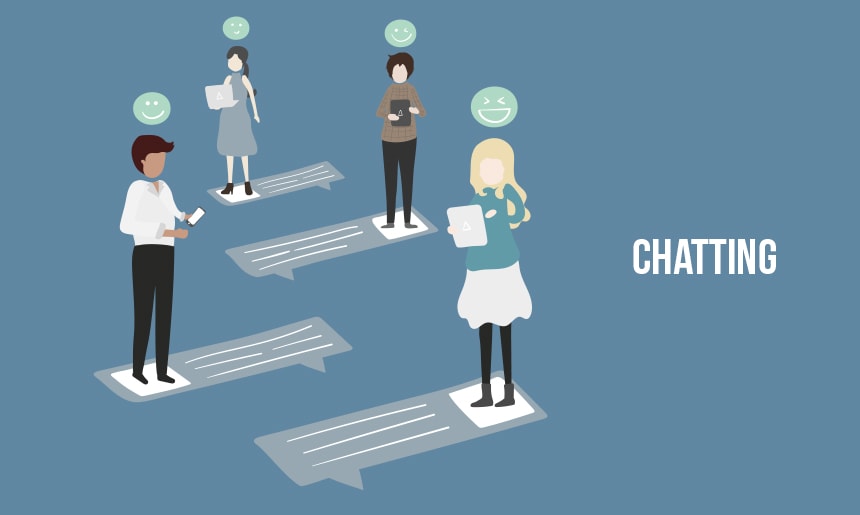Next Generation Chat Applications

I have friends who are black, white, purple, gay, straight, Martian, yellow, old, and young. I have friends who are animals and a few who I believe to be robots. All of them are people to me. In my mind, it's not about what you look like or what you do; it's about who you are inside. ~Tracy Morgan, Actor
Technology has come a long way since the advent of computers and cell-phones. Truly a phenomenon which wasn't predicted before as to how fast science and technology can advance; rightfully tagging this century as the "Technology Bloom Phase".
One of the aspects which has been the improvement in the methodologies centric towards communication. Starting off with Orkut and Rediff to Gmails and Outlook; from MySpace to Facebook, Twitter; from Yahoo Messenger and BBM to WhatsApp, Omegle and Line; the general public have witnessed a global advancement in platforms for communication and information sharing with major revamps in existing frameworks and also invention of new platforms. Data sharing has now exceeded all our previous calculations and is rising exponentially which lead to the birth of BigData. But even in this digital era, communication is a very broad term to look into; Thus, constraining the parameters as per the scope of this article we shall look into the domain of chat applications and what does the future holds for next generation chat application.
What is Chat?
Chat is the process of communicating or interacting by sending and receiving messages in various forms digitally over the internet by two or more participating individuals via a chat platform also known as a Chat Application or Software.
What is a Chat Application?
A Chat Application is an interface or a Software application which runs on your mobile devices and provides a platform for users to interact with each other over the internet. Technically speaking, a chat application is a server-client application where the client uses a specific port on the network and the recipient of the message is also connected to the same port of the network and the message or data is shared over the server.
- Auto-complete: Now with smarter software, the chatting application provides users with a list of words based on the first letter of the word typed which is based on our most used words from the vocabulary corpus stored.
- Automated Replies: Now with the rush and workload, many working people fail to reply to emails or messages which has been implemented as a feature in Gmail and other chatting application which allows you to select a reply generated appropriate to the message received.
- Voice to Text Input: Chat Applications have made their interfaces smoother by enabling voice to text input for users to say out their message which gets delivered to the intended recipient in text format.
- Animated Emoticons: Most popularly seen in the iPhone X, Animated Emoticon or popularly known as Animoji is the feature within chat application enabling users to get creative and interact with others via emoticons based on virtual characters resembling their facial characteristics.
To mask off, these are few of the many advancements chat applications have underwent over the years. But one of the major innovation in the field of chat applications was in the late 2010's which was termed as "ChatBots".
A messaging application, sometimes referred to as a conversational interface, designed to simplify complex predefined task(s). The "chatbot" label covers a number of categories including stand-alone applications, AI tools, bot developer frameworks and messaging, bot discovery, connectors/shared services, and analytics.
“Messaging apps are the platforms of the future and bots will be how their users access all sorts of services” ~Peter Rojas, Entrepreneur
- Starbucks
- Lyft
- Fandango
- Spotify
- Sephora
- MasterCard
- PizzaHut
- Udacity
There are many aspects of advancements to cover as chat applications become more smarter and chatbots more intelligent and human-like. However, only future will tell of what these chat applications will be in the future.

Leave your comment
Your Comment:
Note: HTML is not translated!